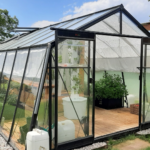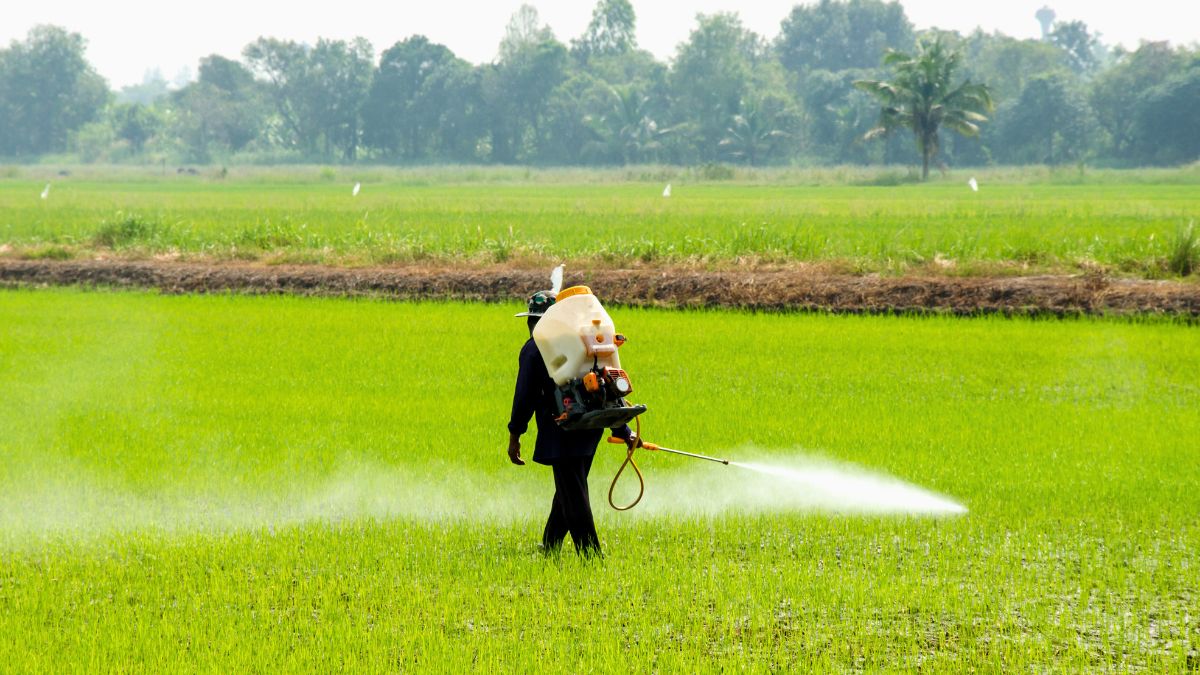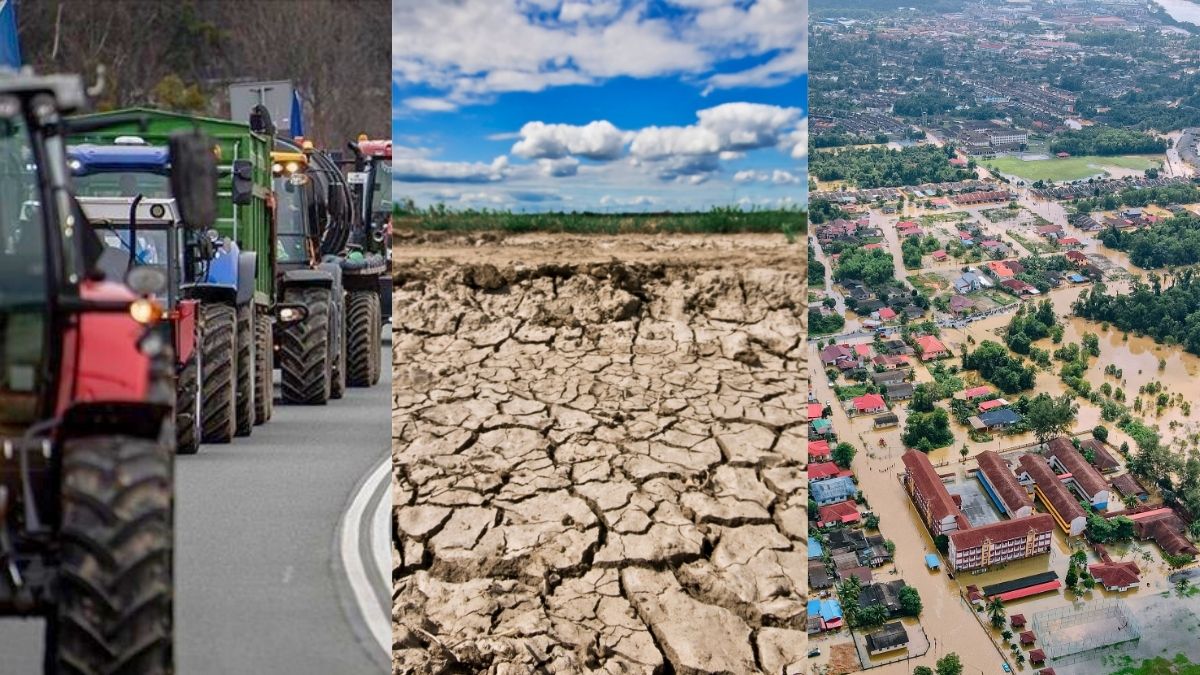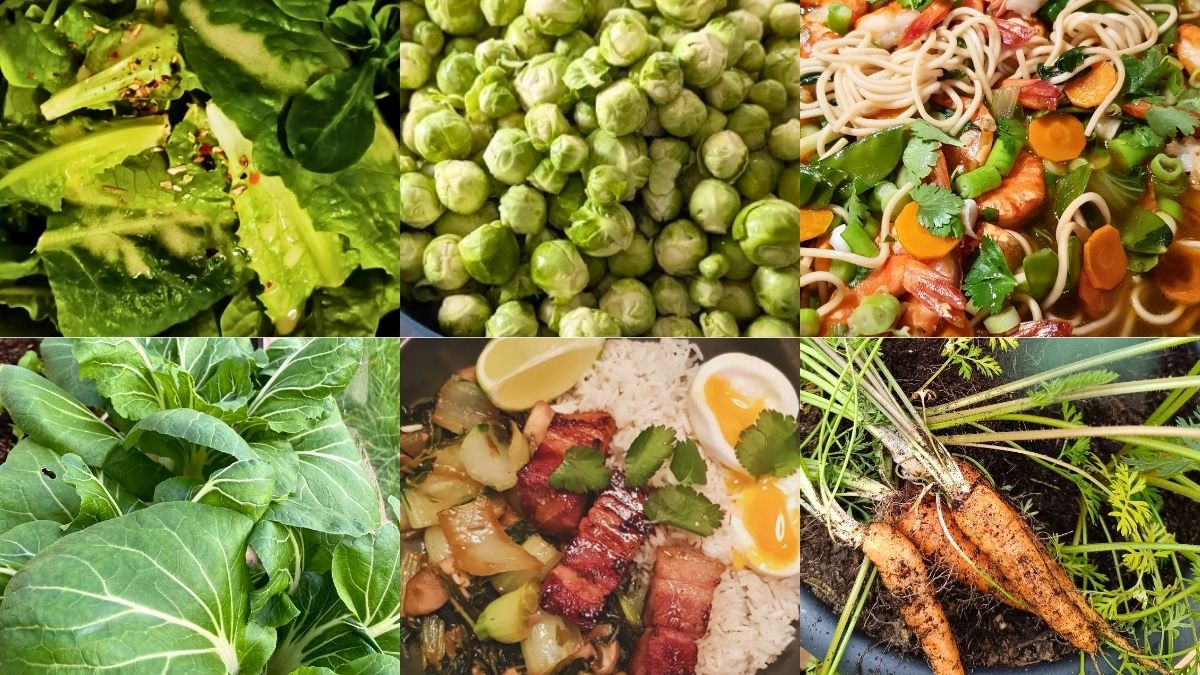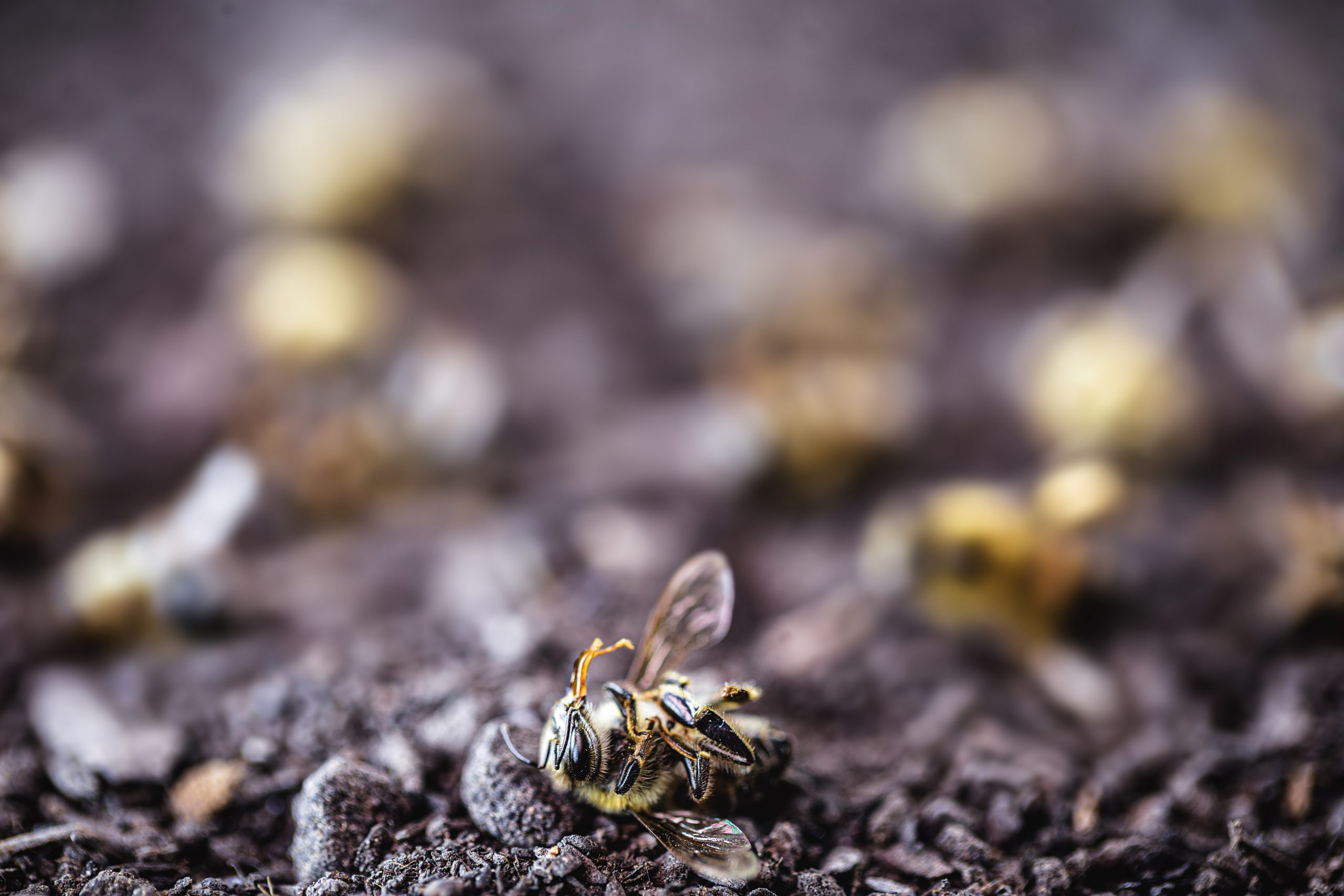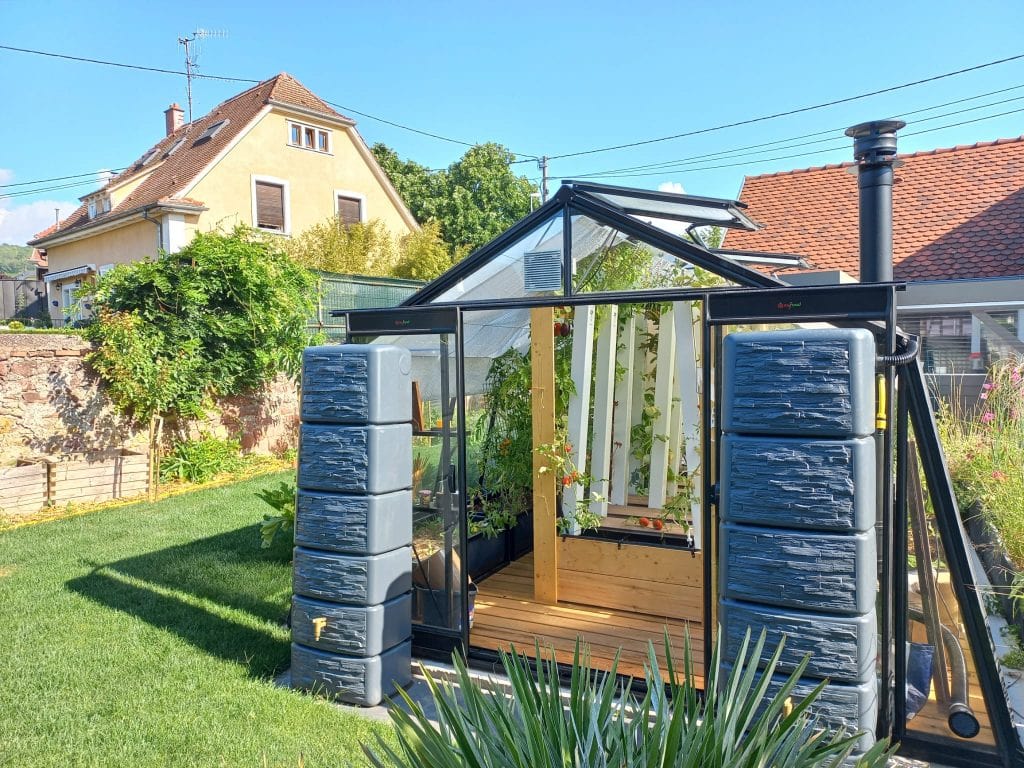
Optimising water in a vegetable garden is the key to a tasty and abundant fruit and veggie harvest. In dry periods, when water is at a minimum, plant growth is put on hold. When the season is difficult, when it rains every day and the air is too humid, diseases develop and ruin your crops…
However, lack of water for your crops or poor moisture management is not a hopeless problem: here are our 5 tips for better water management in a vegetable garden.
1. Choosing the right way and time to water
The issue with water is that it evaporates. At the height of summer, when the sun is at its peak, temperatures make watering much less effective. To save water, it is, therefore, necessary to follow the following tips from experienced gardeners.
Ideally, install the cream of the crop for watering
The best solution is to install raised beds with a water tank, which manages their water supply independently. Smart greenhouses are equipped with these, which can save 90% of water compared to a traditional vegetable garden.
Drip irrigation is also an excellent solution to avoid water loss, especially if it is programmed during the night when temperatures drop. Watering in the evening allows the plants to regenerate before a new heat wave comes, and thus increases their resistance.
Some simple watering techniques
If you don’t have (yet) these two great tools for watering your garden, here are some tips:
- Water early in the morning or late in the evening
- Focus on the base of the vegetables and not the leaves (to avoid fungal diseases and lose as little water as possible). As you can see, forget about automatic sprinklers!
- It is better to water every two or three days than superficially every day.
- Adjust your watering according to the heat and the condition of the plants
- Use a watering can or a hose with a resealable nozzle, so as not to lose water between plots.
2. Shade and cover
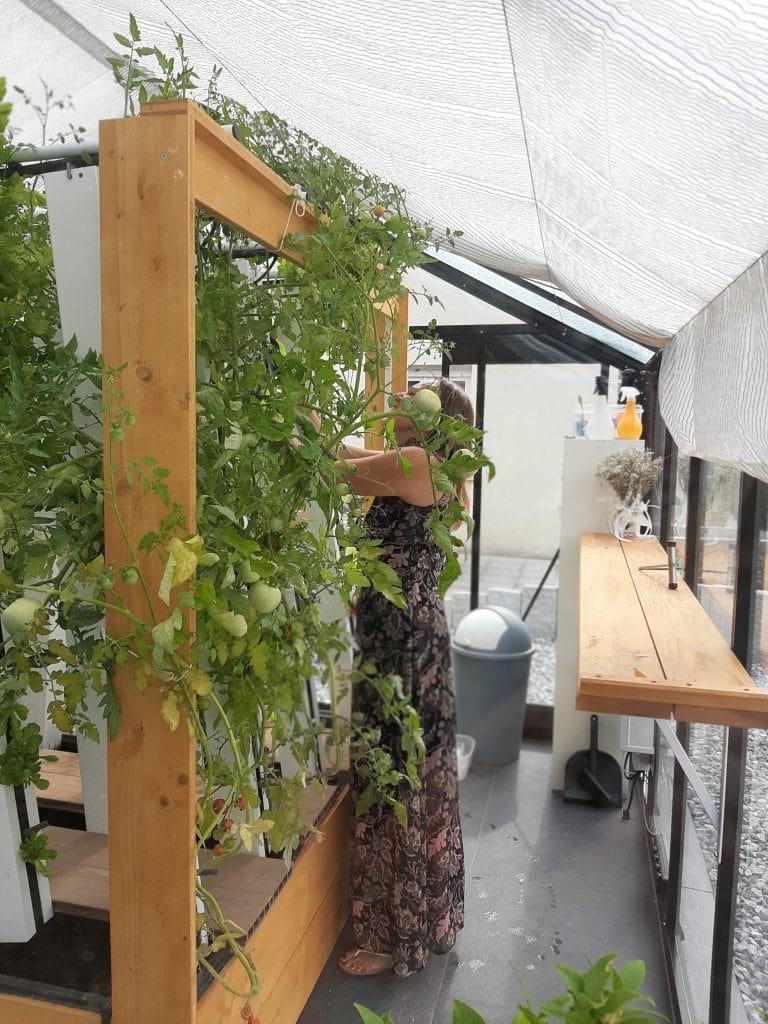
Shade cloth in greenhouses is very useful in summer!
Second tip: to improve water efficiency in a vegetable garden, think about providing some share to your crops.
A vegetable garden in full sun is a vulnerable vegetable garden. Did you know that, contrary to popular belief, tomato plants hate being in full sun?
There are several options available to you:
- Plant trees in your garden so that the garden has shade
- Build your vegetable garden between some small trees
- Place one or two bowers with climbing plants on them
- Invest in a smart greenhouse, which includes a specially developed R&D fabric to stop harmful rays and let in enough light
3. Use oyas or perma-tanks with water storage

Permaculture tanks from Myfood smart greenhouses
We mentioned above that our greenhouses are equipped with raised beds with water reserves, which allows you to:
- Optimise water use in your vegetable garden for all crops grown in containers
- Reduce the amount of water needed by 90%.
- And to go on holiday for up to 2 weeks without causing your crops to suffer.
The other thousand-year-old solution is called the oya (terra cotta watering vessel). In simple words, porous clay pots. They are buried in the garden, filled with water, with a lid on top. They limit evaporation and allow the roots of the plants to drink by capillary action directly around the oyas, when they need it. An economical and very practical solution!
4. Collect and reuse rainwater
To optimise water in a vegetable garden, the best way is to use water from nature. There are several ways to collect rainwater:
- Digging a rainwater recycling tank in your garden
- Connecting gutters on your roof to a water storage tank
- Putting several jerry cans in the garden
- Installing water recuperators in front of your smart greenhouse, a module available as a turnkey solution for our greenhouses.
Rainwater has several advantages: it is soft, low in calcium, at room temperature (perfect to avoid stressing the plants), and has a pH close to what the fish need in aquaponics (so it is perfect for filling the fish tanks). And if you have too much, you can use it in the garden, or to clean your car, if you have one.
5. Investing in a smart greenhouse

A greenhouse to save water
Last but not least, a final tip for optimising water in a vegetable garden is, of course, to opt for a smart greenhouse. Water management is optimised on several levels:
- Raised beds with water reserves limit evaporation and allow for better management of water inputs
- The greenhouse is a closed circuit, which prevents water from escaping
- The fishponds are covered with wooden boards, limiting evaporation
- The greenhouse is provided with shade cloth and automated windows that ventilate it to avoid overheating
- The greenhouse is connected: an application alerts you when the water in the tanks or aquaponics ponds drops
- The water recuperators collect rainwater all year round.
A greenhouse to protect crops
During a very rainy summer, the greenhouse is also the best way to protect your crops.
- The greenhouse protects the plants from moisture on the leaves and thus prevents fungal diseases
- It prevents hail and snow from destroying the crops, in spring but sometimes even during summer… Hailstones are increasingly frequent in May and June, as in 2021 and 2022.
With these tips about water management, you’ll never feel again like a fish out of water!
Don’t forget to save on Adam’s ale, which is increasingly running out, year after year. In 2022, the water cycle was broken in April for the second year running. This rapid evolution worries scientists, who fear that the availability of fresh water will become quite uncertain.
In this complex context, everyone, private or professional, can do their part. If you are reading these lines, we have already congratulated you on your commitment.
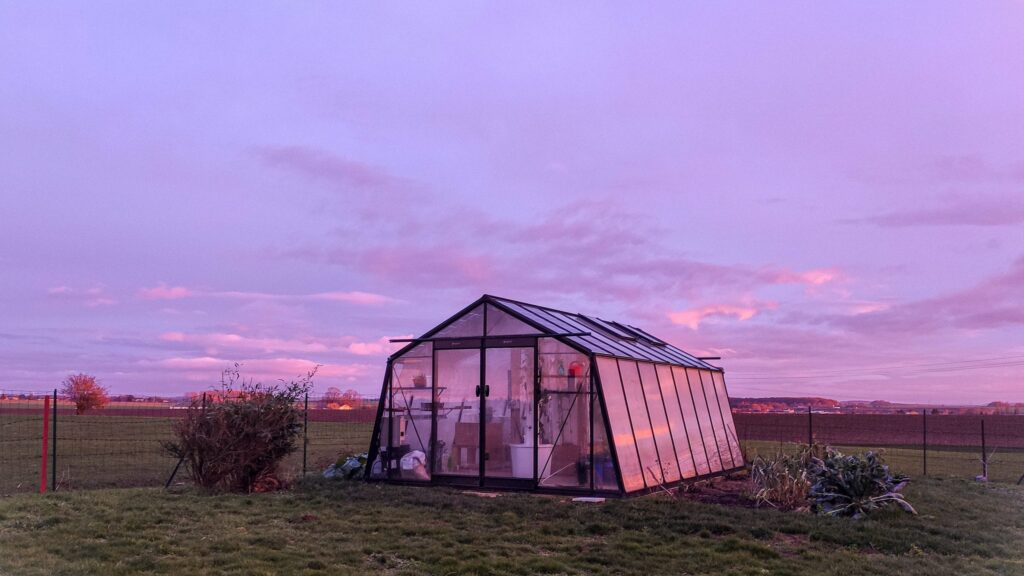
Would you like to invest in your own smart, connected greenhouse? Go for it!


